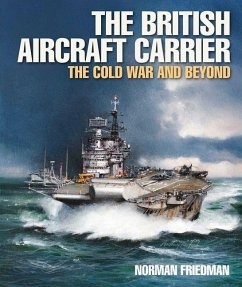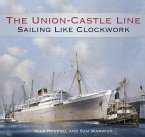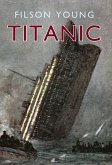This richly detailed and heavily illustrated study traces the evolution of British aircraft carriers from World War II to the present, highlighting the Royal Navy's critical innovations--including the angled deck and steam catapult--that made modern jet carrier aviation possible. Drawing on declassified British and U.S. documents, it reveals how British ingenuity preserved carrier capability through austerity, influenced global naval design, and helped sustain shipborne air power into the 21st century. The Royal Navy ended the Second World War with a large force of aircraft carriers and a substantial construction program intended to produce larger and more capable ships. Most of these were cancelled during postwar retrenchment and the few that survived were completed much later, leaving the RN with an ageing and rapidly shrinking fleet. At the same time, the introduction of jet aircraft threatened the viability of carrier aviation, and it was only a sequence of British innovations (the angled deck, the steam catapult, and the mirror landing sight) that made it possible for carriers to operate jet aircraft. These British developments, particularly the steam catapult, were crucial to the survival of the U.S. carrier force in the postwar era, to an extent often forgotten. Driven by limited resources, the British continued to innovate, producing the first commando carriers, and later the RN played a crucial role in the VSTOL carrier revolution - a response to the cancellation of the large-deck CVA-01 design in 1966. Although the size of the Fleet Air Arm declined in numbers, without the Sea Harriers of Hermes and Invincible, the recapture of the Falklands in 1982 would have been impossible. Most recently, the tradition of original thinking continues to be seen in the radical two-island layout of Queen Elizabeth and Prince of Wales -since imitated by the Chinese - and the acquisition of F35 stealth fighters once again gives the Royal Navy potent ship-based air power. This book covers all postwar British-built carriers, including those in Commonwealth and foreign service, with the historical context, both operational and technical, explained in detail, as is the connection to larger British national concerns. Based largely on declassified official documents, both British and U.S., it is heavily illustrated with photographs, but also reproduces official plans from the National Maritime Museum, many of which have never previously been published.
Bitte wählen Sie Ihr Anliegen aus.
Rechnungen
Retourenschein anfordern
Bestellstatus
Storno








